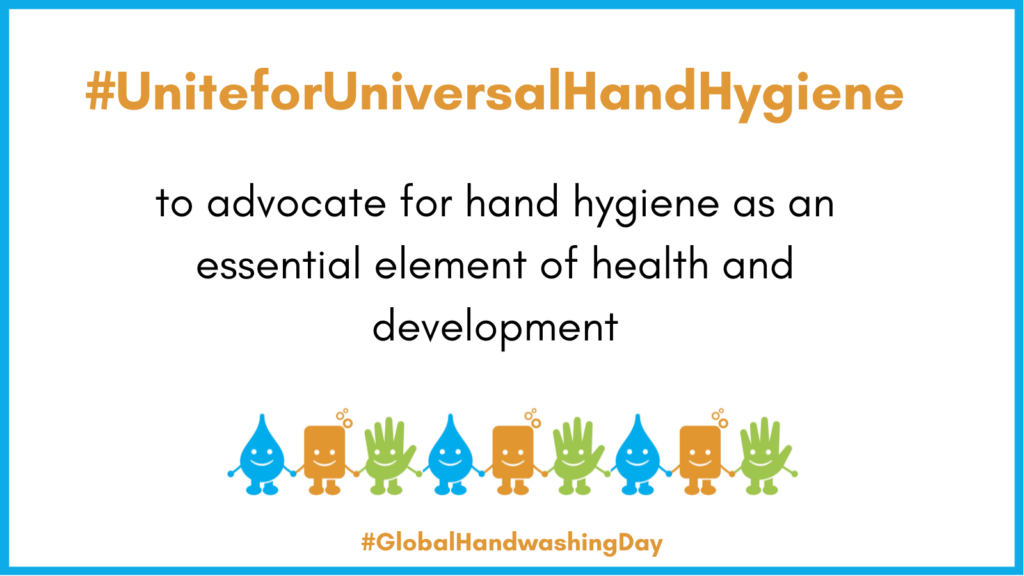
Anne Schiller, George Mason University
From the outset of the SARS-Covid 19 pandemic, governments and private entities worldwide launched health awareness campaigns that included instruction on cleansing one’s hands. Wall signs and foot markers materialized in a thrice. A barrage of how-to videos were posted on websites the world over. Medical doctors modelled competence, washing their hands on television while singing the happy birthday song (twice). These campaigns continue alongside already-established theme days or weeks that also direct attention to handwashing and disease prevention. The latter include Global Handwashing Day (October 15), National Handwashing Awareness Week (the first full week of December), and the World Health Organization-sponsored World Hand Hygiene Day (May 5).
Anthropologists and others have long been drawn to the pragmatics and theoretics of hygiene. In a 1934 lecture on techniques of the body, for example, Marcel Mauss argued that studies of movement should attend concomitantly to biological, sociological and psychological facets. How humans move and care for their bodies (including ‘rubbing, washing, soaping’), he suggested, was the result of ‘prestigious imitation’ of individuals who have authority over them and in whom they have confidence:
In … the art of using the human body, the facts of education were dominant … The action is imposed from without … The individual borrows the series of movements which constitute it from the action executed in front of him or with him by others (1973:73).
Mauss’ proposition speaks to the source and conveyance of authoritative knowledge, a topic of extraordinary relevance during public health crises. To his point, I find the current slew of handwashing videos on YouTube and other sites to be excellent resources for anthropology class projects, and utilize several in an activity that nurtures introductory students’ skills in critical thinking and observation.
This particular activity comes on the heels of a discussion of cultural universals in comparative perspective. Human hygiene is taken as an example. Cleansing the body is a universal behavior. Why and how it is done varies across cultures. To underscore the latter point I project clips from the Margaret Mead/Gregory Bateson 1950s film study of baby bathing in Bali, New Guinea, and the United States. I follow-up by asking students to comment, first on what they saw and heard in the film – for example, how the mothers’ techniques differed and whether the film’s narration led us to focus on only particular aspects of the experience – and second, on how their own body care is shaped by cultural norms.
Students are then given the opportunity to view two to four handwashing videos – in English and other languages – and asked to identify similarities and differences among them. As they watch, they must note cues that could serve as springboards to deeper understandings of cultures associated with the videos’ intended audiences. For example, is handwashing portrayed as a benefit to individuals or a responsibility to the larger society? Is there a focal character(s) or a cast? If a character in the video does not wash hands, is that character portrayed as ignorant, deviant, or something else? Students are asked to devote particular attention to how the message ‘wash your hands’ is framed and who delivers it. As per Mauss’ argument regarding learning from those in whom we have ‘confidence’, many handwashing videos feature persons of influence including police officers, medical personnel, teachers, or celebrities. At the same time, others highlight dancing water droplets or talking germs and cartoons.
This activity can be adapted to fit many learning contexts. Students can watch the videos in groups or individually. They can compare notes in person or virtually, or post and respond on discussion boards. Obviously, conversations that occur after watching these videos often segue to challenges of infrastructural limitations (access to clean water, soap or soap substitutes). The exercise thus also lends itself to units on development or globalization.
My students are always engaged by this activity, including due to the videos’ relatability. It is undeniably timely. One student shared in an email after that, ‘This observation study was interesting and fun. I thought it would be about watching medical professionals lecturing on why people must wash their hands. Instead I saw videos that used dance or animation or song to get the message across. It helped me to realize that different countries can use their own cultural practices and preferences to contribute to public health and safety. It is not one size fits all’. Another student posted, ‘I want to express how much joy I got from watching these videos. I found them to be uplifting and informative, especially in this uncertain time. It was a positive experience for me to watch how unified our world has become and a reminder that across cultures and ethnicity we can be biologically the same, culturally unique, and all united in protecting human welfare’.
Instructors should have no difficulty locating videos that are appropriate to the subject at hand.
References
Bateson, Gregory, and Margaret Mead. (1951/1954), Bathing Babies in Three Cultures. Philadelphia: Pennsylvania State University.
Mauss, Marcel. (1973) [Orig. 1935]. Techniques of the Body, translated by Ben Brewster, Economy and Society 2 (1), 70-88.


Leave a Reply
You must be logged in to post a comment.